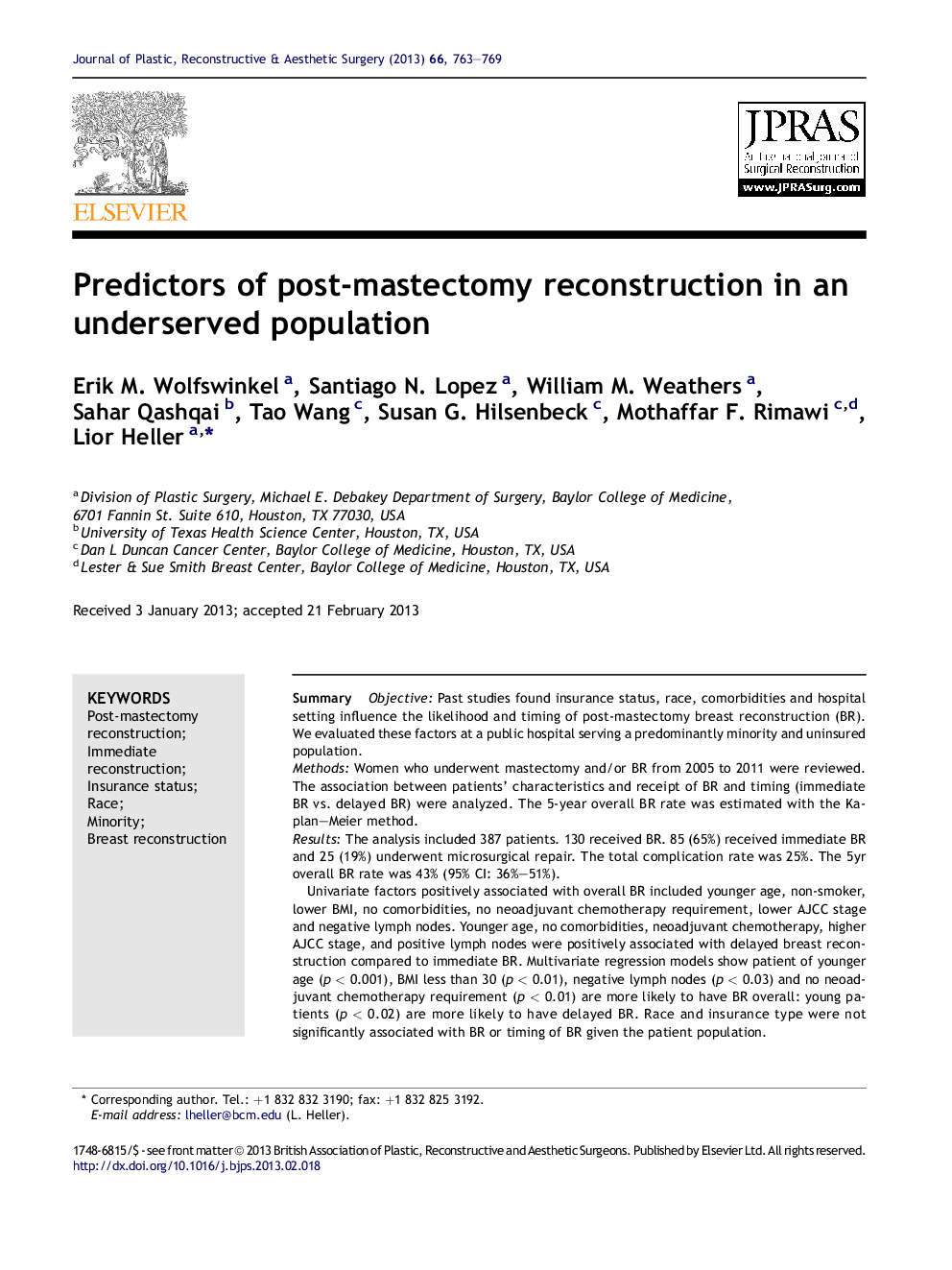| Article ID | Journal | Published Year | Pages | File Type |
|---|---|---|---|---|
| 4117714 | Journal of Plastic, Reconstructive & Aesthetic Surgery | 2013 | 7 Pages |
SummaryObjectivePast studies found insurance status, race, comorbidities and hospital setting influence the likelihood and timing of post-mastectomy breast reconstruction (BR). We evaluated these factors at a public hospital serving a predominantly minority and uninsured population.MethodsWomen who underwent mastectomy and/or BR from 2005 to 2011 were reviewed. The association between patients' characteristics and receipt of BR and timing (immediate BR vs. delayed BR) were analyzed. The 5-year overall BR rate was estimated with the Kaplan–Meier method.ResultsThe analysis included 387 patients. 130 received BR. 85 (65%) received immediate BR and 25 (19%) underwent microsurgical repair. The total complication rate was 25%. The 5yr overall BR rate was 43% (95% CI: 36%–51%).Univariate factors positively associated with overall BR included younger age, non-smoker, lower BMI, no comorbidities, no neoadjuvant chemotherapy requirement, lower AJCC stage and negative lymph nodes. Younger age, no comorbidities, neoadjuvant chemotherapy, higher AJCC stage, and positive lymph nodes were positively associated with delayed breast reconstruction compared to immediate BR. Multivariate regression models show patient of younger age (p < 0.001), BMI less than 30 (p < 0.01), negative lymph nodes (p < 0.03) and no neoadjuvant chemotherapy requirement (p < 0.01) are more likely to have BR overall: young patients (p < 0.02) are more likely to have delayed BR. Race and insurance type were not significantly associated with BR or timing of BR given the patient population.ConclusionAt a public hospital, serving a largely uninsured population, post-mastectomy rates of immediate BR and overall BR within 5 yrs are 22% and 43%, respectively. Overall complication rates were low and a substantial fraction of post-mastectomy patients received microsurgical BR. Contrary to previous studies, race and insurance status were not found to be the primary drivers of post-mastectomy reconstruction.
